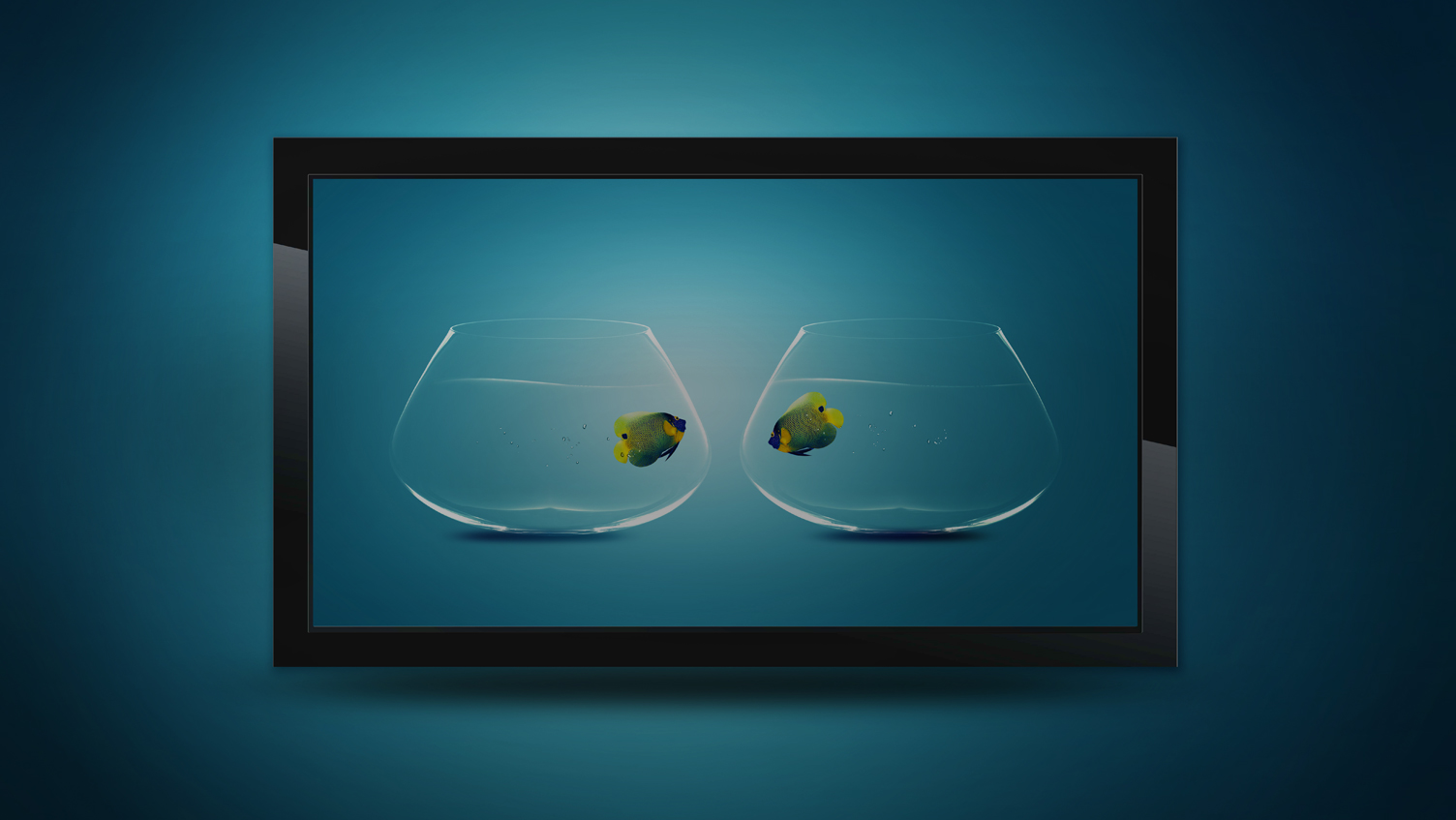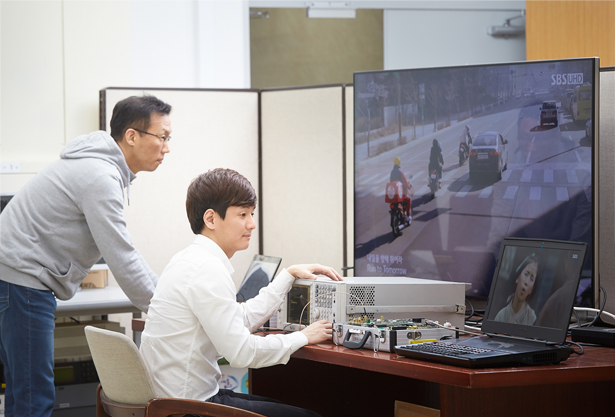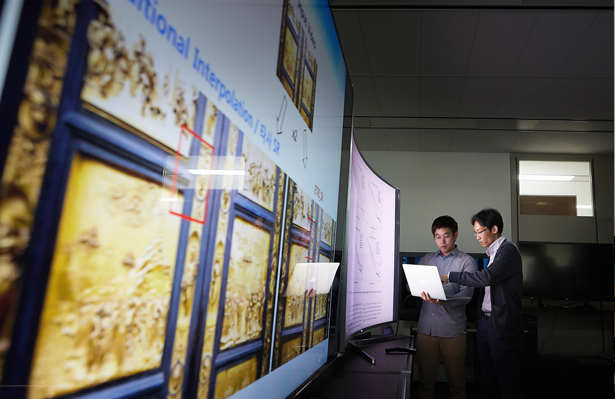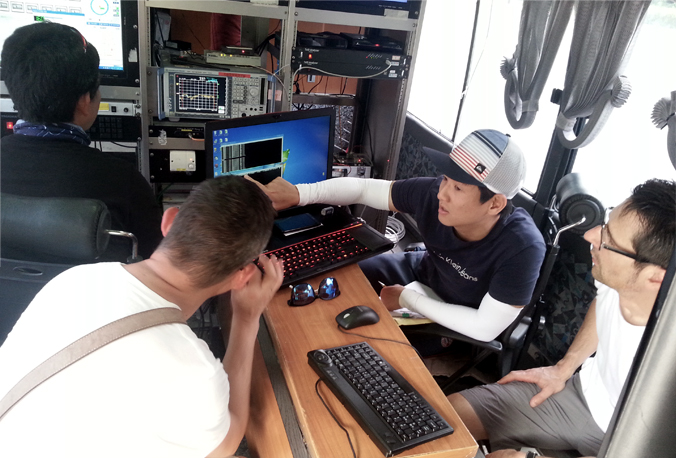
Korean Technology to Secure
Global UHD TV Market
LDM Technology and Video/Audio Compression Technology
Acclaimed UHD Transmission and Video/Audio Compression Technologies
ETRI has driven the core UHD technology to become an international standard and lead the technological development in the UHD market, an increasingly expanding market for the next-generation television.
The LDM (layered division multiplexing) technology developed by ETRI researchers enables the simultaneous transmission and reception of UHD broadcasting and mobile HD broadcasting via a single channel, and is adopted in the ATSC 3.0 standard. The researchers also developed HEVC (high efficiency video coding) to compress data at twice the existing capacity as well as MPEG-H 3D audio technology to provide multi-channel, multi-object services. The video/audio compression technology is projected to be applied to UHD television in the future in the global market.
ETRI’s LDM technology won the NAB Technology Innovation Award at the NAB Show 2015, which was held in April last year in the United States and is the world’s largest broadcasting equipment exhibition. It also won the Best Paper Award at the BMSB 2012, 2014, and 2015, the largest broadcasting and media-related conference in the world. For the video compression technology, Dr. Hui Yong Kim was awarded “Inventor of the Year” at the ceremony of the 51st Day of Invention in May 2015, in recognition of his contribution to core technology research.

Achievements of Continued Broadcasting Technology Development
Thus far, ETRI researchers have engaged in a number of studies with respect to UHD broadcasting. They have transferred the following technologies to a number of companies by 2015: HEVC technology to compress, in real time, 4K-UHD images, which are four times clearer than those provided by full-HD broadcasting, at a rate of 60 frames per second; and upscaling technology that converts full-HD images to 4K-UHD quality. This achievement allowed Korean-developed technologies to lay a foundation for entering the broadcasting equipment market, which had been dominated by foreign technologies.
The researchers are now preparing commercialization of the recently developed MPEG-H 3D audio encoder technology to provide a 10.2 channel stereophonic service for both horizontal and vertical effects and an interactive service to selectively control the volume of dialogues. In addition, they completed convergent 3D broadcasting technology qualifying for the ATSC 3.0 standard that can support 3D UHD broadcasting as well as UHD and mobile HD broadcasting without any data transmission. This remarkable innovation is expected to broaden service options for customers.
ETRI’s core standard patents are now drawing increasing attention for their prospective royalty income. ETRI forecasts that developing core UHD broadcasting technology and securing core patents will play a crucial role in securing a dominant position in the ATSC 3.0 global broadcasting market in the early stage.



Global Market Entry with Patents for Core Standards
ETRI is now fully set for advancing onto the global stage based on its heightened status in the broadcasting technology industry. In August 2016, in response to the suggestion by Technicolor and ATEME, both leading broadcasting technology developers, ETRI successfully completed the world’s first field test in Jeju for LDM technology combined with a new type of SHVC (scalable HEVC). In addition, it is working to build global partnerships with various players in the broadcasting industry, such as CRC (Canada), NHK (Japan), NERC-DTV (China), Fraunhofer (Germany), UPV/EHU and iTeam (Spain). ETRI plans to strengthen its presence in the global market by proposing its core technology to Chinese and European (DVB) next-generation broadcasting specifications. It is also contemplating a packaged global market entry through participation in overseas technology exhibitions together with terrestrial broadcasting stations and small businesses.
In relation to UHD broadcasting technology, ETRI has thus far applied for over 400 patents, published more than 20 SCI-level papers, completed over 10 cases of technology transfer, and earned USD 1.8 million as royalties.
